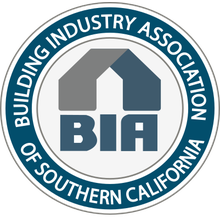For those contractors performing specific federal projects, please be advised that the new Internet based system, "E-Verify" Federal Contractor rule, operated by the Department of Homeland Security (DHS) was published on November 14, 2008 and the "E-Verify" rule will take effect January 15, 2009.
Background
The Civilian Agency Acquisition Council and the Defense Acquisition Regulations Council (Councils) have agreed on a final rule amending the Federal Acquisition Regulation (FAR) to require certain contractors and subcontractors to use the E-Verify system administered by the DHS, U.S. Citizenship and Immigration Services, as the means of verifying that their on-site employees are eligible to work in the United States. Executive Order 12989, as amended, specifically directs the agency heads of Department of Defense, General Services Administration (GSA) and NASA to implement this policy through amendments to the FAR. Under the final rule, Departments and agencies should, in accordance with FAR 1.108(d)(3), amend existing indefinite-delivery / indefinite quantity (IDIQ) contracts to include the clause for future orders if the remaining period of performance extends at least six months after the effective date of the final rule and the amount of work or number of orders expected under the remaining performance period is substantial.
Summary
The rule inserts a clause into Federal contracts committing Government contractors to use the USCIS E-Verify program to verify that all of the contractors' new hires, and all employees (existing and new) directly performing work under Federal contracts, are authorized to work in the United States. The final rule:
- Exempts contracts that are for:
- Commercially available off-the-shelf (COTS) items; and
- Items that would be COTS items but for minor modifications.
- Requires inclusion of the clause in subcontracts over $3,000 for services or for construction.
- Requires contractors and subcontractors to use E-Verify to confirm the employment eligibility of all existing employees who are directly performing work under the covered contract.
- Applies to solicitations issued and contracts awarded after the effective date of the final rule in accordance with FAR 1.108(d). Under the final rule, Departments and agencies should, in accordance with FAR 17 1.108(d)(3), amend – on a bilateral basis – existing indefinite delivery/indefinite-quantity contracts to include the clause for future orders if the remaining period of performance extends at least six months after the effective date of the final rule.
- In exceptional circumstances, allows a head of the contracting activity to waive the requirement to include the clause. This authority is not delegable.
Changes Adopted in the Final Rule
Below is a summary of changes made to the final rule:
- Significantly Extended Timelines. The final rule amends the proposed rule to permit Federal contractors participating in the E-Verify program for the first time a longer period – 90 calendar days from enrollment instead of 30 days as initially proposed - to begin using the system for new and existing employees. The final rule also provides a longer period after this initial enrollment period – 30 calendar days instead of 3 business days – for contractors to initiate verification of existing employees who have not previously gone through the E-Verify system when they are newly assigned to a covered Federal contract. Contractors already enrolled and using the program as Federal contractors will have the same extended timeframe to initiate verification of employees assigned to the contract, but the time limits will be measured from contract award date instead of from the contractor's E-Verify enrollment date. With regard to verification of new hires, a contractor that has already been enrolled as a Federal contractor for 90 calendar days or more will have the standard 3 business days from the date of hire to initiate verification of new hires. Those contractors that have been enrolled in the program for less than 90 calendar days will have 90 calendar days from the date of enrollment as a Federal contractor to initiate verification of new hires.
- Covered Prime Contract Value Threshold. The final rule requires the insertion of the E-Verify clause for prime contracts above the simplified acquisition threshold ($100,000) instead of the micro-purchase threshold ($3,000).
- Contract Term. The final rule clarifies that the E-Verify clause need not be inserted into prime contracts with performance terms of less than 120 days.
- Sureties. Under the final rule, sureties performing under a takeover agreement entered into with a Federal agency pursuant to a performance bond need only verify employees assigned to the covered Federal contract.
- Security Clearances and HSPD-12 Credentials. The final rule exempts employees who hold an active security clearance of confidential, secret or top secret from verification requirements. The rule also exempts employees for which background investigations have been completed and credentials issued pursuant to the Homeland Security Presidential Directive (HSPD)-12, "Policy for a Common Identification Standard for Federal Employees and Contractors," which the President issued on August 27, 2004.
- All Existing Employees Option. The final rule provides contractors the option of verifying all employees of the contractor, including any existing employees not currently assigned to a Government contract. A contractor that chooses to exercise this option must notify DHS and must initiate verifications for the contractor's entire workforce within 180 days of such notice to DHS.
- Contracting Officer Authority. Allows the Head of the Contracting Activity to waive E-Verify requirements after contract award, either temporarily or for the period of performance.
- Definitions:
- Employee assigned to the contract - The final rule clarifies that employees who normally perform support work, such as general company administration or indirect or overhead functions, and that do not perform any substantial duties applicable to an individual contract, are not considered to be directly performing work under the contract.
- Subcontract and subcontractor - Adds definitions derived from FAR 44.101.
Further information on registration for and use of E-Verify can be obtained via the Internet athttp://www.dhs.gov/E-Verify.
